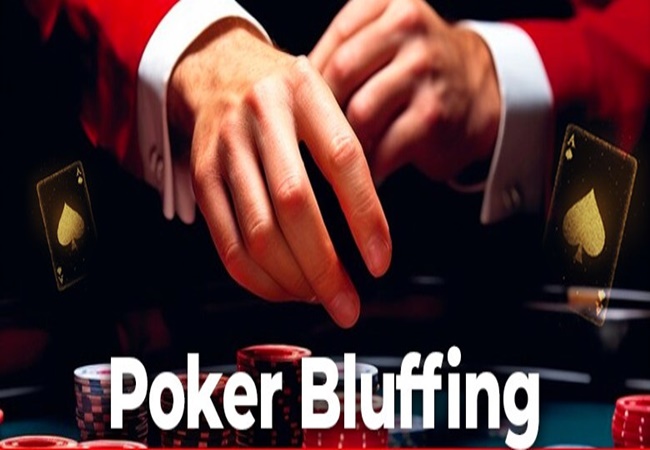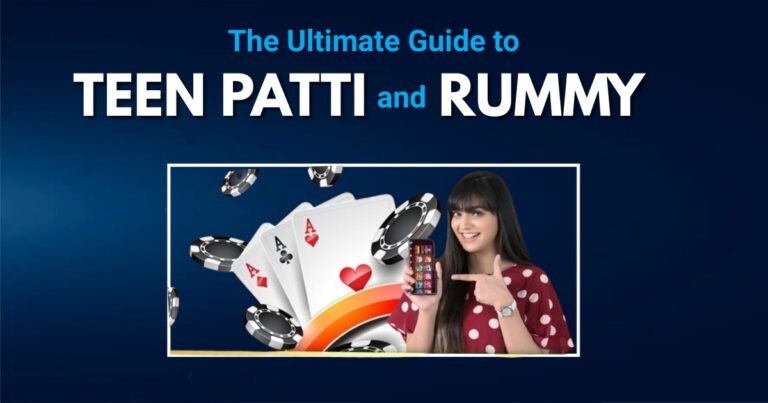Understanding Bluffing in Teen Patti: Tips to Master the Skill
Teen Patti, often referred to as the Indian version of poker, is a game that thrives on strategy, intuition, and the ability to read your opponents. Among its myriad of skills, bluffing stands out as a critical technique that can make or break your gameplay. Bluffing in Teen Patti is an art—it requires a blend of confidence, psychology, and calculated risk-taking. This article dives deep into understanding bluffing in Teen Patti and offers actionable tips to help you master this essential skill, enhancing your Rummy game too.

What Is Bluffing in Teen Patti?
Bluffing is the act of deceiving your opponents into believing something about your hand that is not true. It could mean convincing others that you have a strong hand when you actually have a weak one or downplaying the strength of your hand to lure opponents into higher stakes. In essence, bluffing is about influencing your opponents’ decisions in your favor without revealing your actual cards.
In Teen Patti Stars, where the outcome often hinges on incomplete information, bluffing becomes an indispensable tool. A well-executed bluff can pressure opponents into folding, allowing you to win pots without having the best cards.
The Importance of Bluffing in Teen Patti
Bluffing serves multiple purposes in Teen Patti, including:
- Creating Uncertainty: By bluffing in Teen Patti occasionally, you keep your opponents guessing about your true strategy, making it harder for them to predict your moves.
- Controlling the Game: A successful bluff can shift the dynamics of the game, putting you in a dominant position.
- Maximizing Wins: Bluffing can help you win pots even when your cards are not the strongest, increasing your overall gains.
- Psychological Edge: Mastering bluffing in Teen Patti gives you a mental advantage over your opponents, who may start second-guessing their own strategies.
Types of Bluffs in Teen Patti
Understanding the different types of bluffs can enhance your ability to use them effectively. Here are some common bluffing strategies:
- Pure Bluff: This involves betting aggressively with a weak hand, relying entirely on your ability to intimidate opponents into folding.
- Semi-Bluff: A semi-bluff occurs when you have a weak hand that has the potential to improve. For example, you might bluff with a low pair, hoping to turn it into a higher-value hand.
- Slow Play Bluff: This involves underplaying a strong hand to lure opponents into betting more, only to reveal your strength later.
- Continuation Bluff: This is used when you bet on a strong hand initially and continue betting aggressively to maintain the appearance of strength, even if your hand weakens over time.
Tips to Master Bluffing in Teen Patti
Mastering the art of bluffing requires practice, observation, a keen understanding of the game’s dynamics, and insights from Teen Patti FAQs to refine your skills. Here are some tips to help you bluff effectively:
1. Study Your Opponents
Observing your opponents is the cornerstone of successful bluffing in Teen Patti. Pay attention to their betting patterns, reactions, and body language (in live games). Some players are more risk-averse, making them easier targets for bluffs, while others may call bets frequently, requiring a more cautious approach.
2. Choose the Right Moment
Timing is critical when bluffing in Teen Patti. Ideal moments to bluff include:
- When you’re in a later position and can observe how other players act.
- When the pot is relatively small, minimizing your potential losses if the bluff fails.
- When your opponents seem unsure or hesitant.
3. Maintain Consistency
Your betting behavior should align with the narrative you’re trying to create. For instance, if you’re pretending to have a strong hand, your bets should be bold and confident. Any inconsistency in your actions can raise suspicion.
4. Control Your Emotions
Bluffing in Teen Patti requires a poker face—a calm and composed demeanor that doesn’t give away your intentions. Avoid common giveaways like fidgeting, hesitating, or changing your tone of voice in live games. Online, be mindful of your betting speed and patterns.
5. Use Semi-Bluffs Wisely
Semi-bluffs are safer than pure bluffs because they give you a backup plan. If your bluff is called, you still have a chance to improve your hand and win.
6. Adapt to the Table
Each Teen Patti game is different, and your bluffing strategy should adapt to the table dynamics. If the table is full of aggressive players, you might need to bluff less frequently and focus on countering their tactics. Conversely, a passive table might offer more opportunities to bluff successfully.
7. Don’t Overdo It
Bluffing too often can make you predictable, and opponents will start calling your bluffs. Use bluffing sparingly and strategically to keep your opponents off balance.
8. Understand Risk vs. Reward
Before bluffing, evaluate the potential risk and reward. If the pot size is substantial and your chances of success are high, the bluff might be worth attempting. However, avoid risking too much on a low-probability bluff.

Common Mistakes to Avoid When Bluffing
Bluffing is a high-risk, high-reward strategy that can backfire if not executed properly, making it one of the common mistakes players often encounter. Here are some pitfalls to watch out for:
- Bluffing Against Too Many Players: The more opponents in the hand, the harder it is to convince all of them to fold.
- Ignoring Table Image: Your previous actions influence how opponents perceive you. If you’ve been caught bluffing repeatedly, your credibility diminishes.
- Bluffing Without a Plan: Bluffing should be a calculated move, not a spur-of-the-moment decision. Always have a clear reason and strategy behind your bluff.
- Failing to Read Opponents: Misjudging your opponents’ tendencies can lead to failed bluffs. For instance, bluffing against a “calling station” (a player who rarely folds) is often futile.
- Overcommitting to a Bluff: Knowing when to abandon a bluff is just as important as initiating it. If your opponents show unwavering strength, it’s better to cut your losses and fold.
Practicing Bluffing in Teen Patti
As with any skill, practice is key to mastering bluffing. Here are some ways to improve your bluffing abilities:
- Play Free or Low-Stakes Games: These games allow you to experiment with different bluffing techniques without significant financial risk.
- Analyze Your Gameplay: Review past games to identify successful and failed bluffs. Look for patterns and areas for improvement with the help of a comprehensive Teen Patti guide.
- Learn from Others: Observe skilled players, either in person or through online streams, to understand how they execute bluffs.
- Engage in Friendly Games: Playing with friends in a casual setting can provide valuable practice and feedback on your bluffing skills.
Conclusion
Bluffing in Teen Patti is more than just a gamble—it’s a strategic tool that can elevate your gameplay when used effectively. By understanding the nuances of bluffing, studying your opponents, and practicing consistently, you can master this art and gain a significant edge in your games. Remember, bluffing is not about fooling others all the time; it’s about knowing when and how to make your move. So, the next time you sit at a Teen Patti table, use these tips to outwit your opponents and take control of the game.








